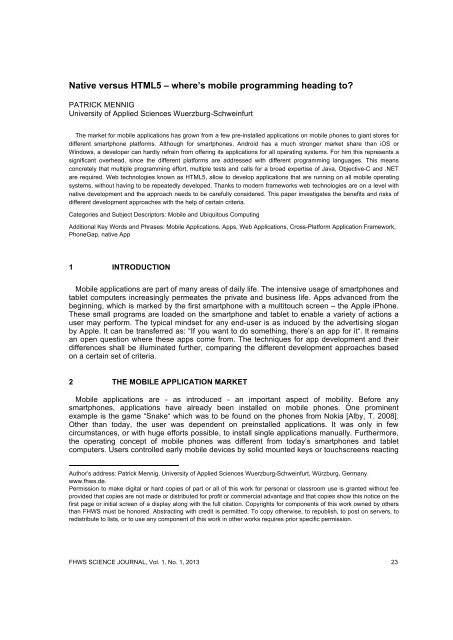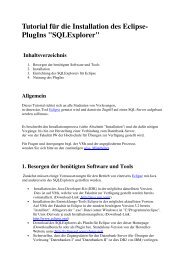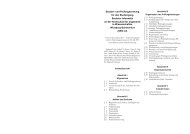FHWS Science Journal - Fakultät Informatik und Wirtschaftsinformatik
FHWS Science Journal - Fakultät Informatik und Wirtschaftsinformatik
FHWS Science Journal - Fakultät Informatik und Wirtschaftsinformatik
You also want an ePaper? Increase the reach of your titles
YUMPU automatically turns print PDFs into web optimized ePapers that Google loves.
Native versus HTML5 – where’s mobile programming heading to?<br />
PATRICK MENNIG<br />
University of Applied <strong>Science</strong>s Wuerzburg-Schweinfurt<br />
The market for mobile applications has grown from a few pre-installed applications on mobile phones to giant stores for<br />
different smartphone platforms. Although for smartphones, Android has a much stronger market share than iOS or<br />
Windows, a developer can hardly refrain from offering its applications for all operating systems. For him this represents a<br />
significant overhead, since the different platforms are addressed with different programming languages. This means<br />
concretely that multiple programming effort, multiple tests and calls for a broad expertise of Java, Objective-C and .NET<br />
are required. Web technologies known as HTML5, allow to develop applications that are running on all mobile operating<br />
systems, without having to be repeatedly developed. Thanks to modern frameworks web technologies are on a level with<br />
native development and the approach needs to be carefully considered. This paper investigates the benefits and risks of<br />
different development approaches with the help of certain criteria.<br />
Categories and Subject Descriptors: Mobile and Ubiquitous Computing<br />
Additional Key Words and Phrases: Mobile Applications, Apps, Web Applications, Cross-Platform Application Framework,<br />
PhoneGap, native App<br />
1 INTRODUCTION<br />
Mobile applications are part of many areas of daily life. The intensive usage of smartphones and<br />
tablet computers increasingly permeates the private and business life. Apps advanced from the<br />
beginning, which is marked by the first smartphone with a multitouch screen – the Apple iPhone.<br />
These small programs are loaded on the smartphone and tablet to enable a variety of actions a<br />
user may perform. The typical mindset for any end-user is as induced by the advertising slogan<br />
by Apple. It can be transferred as: “If you want to do something, there’s an app for it“. It remains<br />
an open question where these apps come from. The techniques for app development and their<br />
differences shall be illuminated further, comparing the different development approaches based<br />
on a certain set of criteria. 3<br />
2 THE MOBILE APPLICATION MARKET<br />
Mobile applications are - as introduced - an important aspect of mobility. Before any<br />
smartphones, applications have already been installed on mobile phones. One prominent<br />
example is the game “Snake“ which was to be fo<strong>und</strong> on the phones from Nokia [Alby, T. 2008].<br />
Other than today, the user was dependent on preinstalled applications. It was only in few<br />
circumstances, or with huge efforts possible, to install single applications manually. Furthermore,<br />
the operating concept of mobile phones was different from today’s smartphones and tablet<br />
computers. Users controlled early mobile devices by solid mounted keys or touchscreens reacting<br />
Author’s address: Patrick Mennig, University of Applied <strong>Science</strong>s Wuerzburg-Schweinfurt, Würzburg, Germany.<br />
www.fhws.de.<br />
Permission to make digital or hard copies of part or all of this work for personal or classroom use is granted without fee<br />
provided that copies are not made or distributed for profit or commercial advantage and that copies show this notice on the<br />
first page or initial screen of a display along with the full citation. Copyrights for components of this work owned by others<br />
than <strong>FHWS</strong> must be honored. Abstracting with credit is permitted. To copy otherwise, to republish, to post on servers, to<br />
redistribute to lists, or to use any component of this work in other works requires prior specific permission.<br />
<strong>FHWS</strong> SCIENCE JOURNAL, Vol. 1, No. 1, 2013 23








